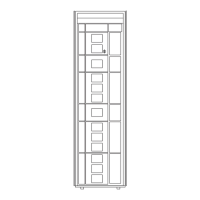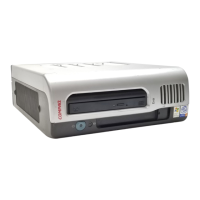74 Maintenance
Troubleshooting
An incorrect installation or configuration can cause platform problems. In this case, the library appears to
be operating normally, but no data can be interchanged, or performance is poor. You also might or might
not get an error code on the operator control panel (OCP). To identify an error caused by this type of
problem, check your installation and configuration setup.
General drive errors usually result from a miscommunication between a library processor and a tape drive
processor, drive and tape interaction issues, or a mechanical malfunction within the library. Both platform
problems and general tape drive errors display an error message or event code on the OCP. Use the event
code or pull a support ticket to report errors to your authorized service provider, or in some cases, to
determine a recovery procedure.
The library depends on several other components to operate correctly. Errors that seem to be caused by
the library are often a result of issues on the host, the network cabling, or with the application software.
When troubleshooting the library, begin by ruling out these components.
Your application software may need to be reconfigured or, in some cases, reinstalled after you have
installed additional drives or slots into the library. Changing the number of load ports, number of reserved
slots, or changing between Ultrium 460 and 960 tape drives, may require changes to software. Some
application software may require the purchase of additional add-on components and/or licenses when
increasing the number of storage slots or drives. Contact your application software provider for more
information, or if newly installed storage slots or drives are not recognized by your application software.
The OCP can be an aid in determining the cause of errors. Check the event log on the Status screen for
the five most recent informational, warning, or critical events. The last event listed on the screen is the most
recent event that occurred. Events have a date stamp, code numbers, a brief text description of the
problem, and usually a location of module or slot where the error took place.
Use Table 16 after you isolate your problem to a category or specific area of the EML, and then go to the
reference mentioned that describes a corrective action. Try the corrective action, and if it does not remedy
the problem, contact your authorized service provider.
Table 16 Fault isolation to a specific area
Problem area or category Where to find corrective action
Startup problems Go to Table 17 on page 75
OCP problems Go to Table 18 on page 77
Robotics problems Go to Table 19 on page 78
Operating problems Go to Table 20 on page 79
Tape drive problems Go to Table 21 on page 80
Interface Manager controller card problems Go to Table 22 on page 81
FC interface controller problems Go to ”Fibre Channel interface controller problems” on
page 82

